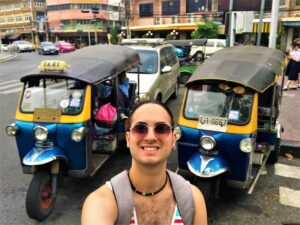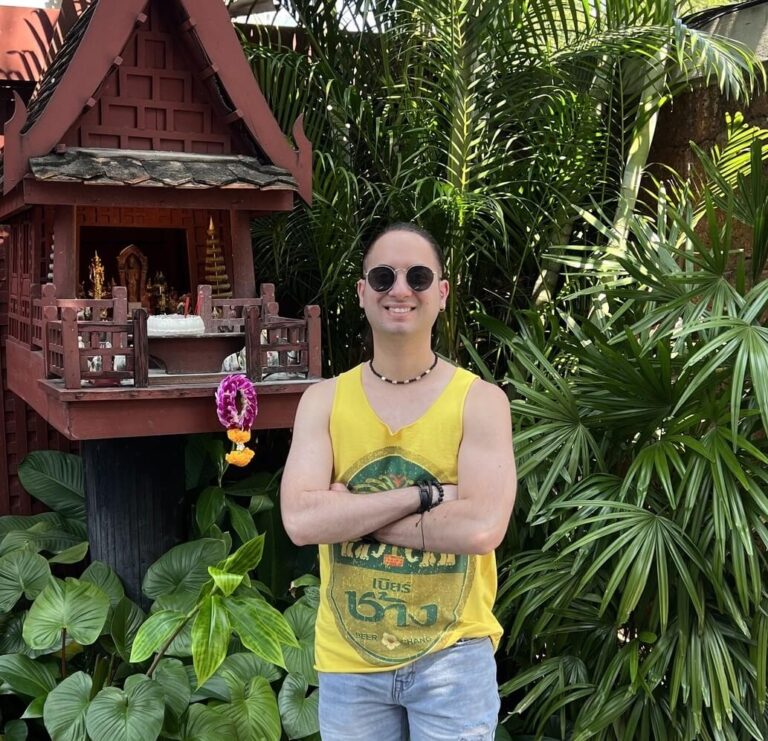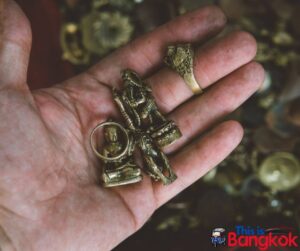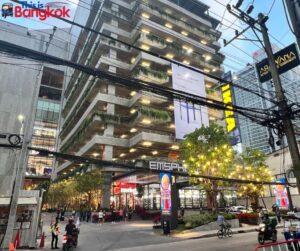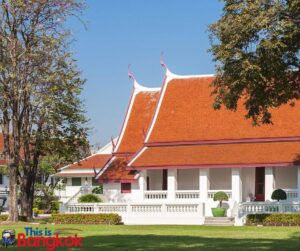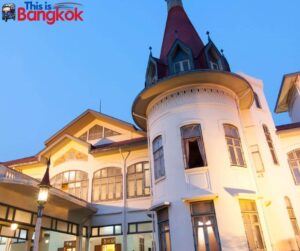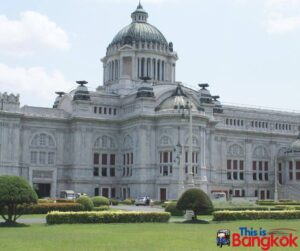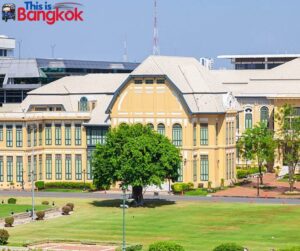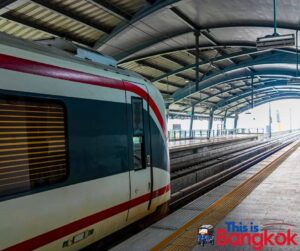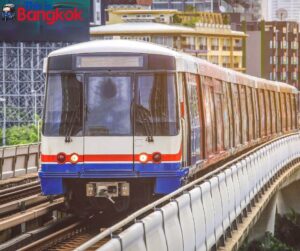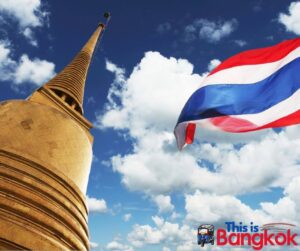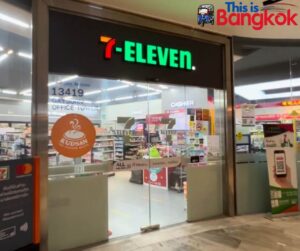Step right up, ladies and gentlemen, as we take you on a journey through the bustling underground wonderland of Bangkok’s Metropolitan Rapid Transit, affectionately known as the MRT.
Brace yourselves because this isn’t your average subway system – it’s a marvel in motion!
Picture this: Bangkok, the City of Angels, with its maze-like streets and traffic that would make a sloth seem speedy. Enter the MRT, your trusty steed, through this urban jungle.
It’s a mass rapid transit system like the city’s superhero, swooping in to save the day for commuters.
Now, let’s talk about the stars of the show – the MRT’s rapid transit lines. We’ve got not one but two fully operational lines that’ll whisk you away to your destination.
And hold onto your hats, folks, because there’s even a monorail line in trial operation and two more lines in the works. Bangkok’s transportation game is strong!
The OG of the MRT family is the Blue Line, or as it’s officially called, the Chaloem Ratchamongkhon Line. This beauty first graced the city with its presence back in 2004, becoming Bangkok’s second metro system.
Locals lovingly refer to it as the “underground train” because, you guessed it, it’s completely underground. No traffic, no hassle, just a smooth ride from Hua Lamphong to Bang Sue.
But wait, there’s more! The Purple Line, or the Chalong Ratchadham Line, joined the party in 2016. It boldly extended outside the Bangkok city limits, connecting Tao Poon with Khlong Bang Phai in Nonthaburi.
It’s like the MRT said, “Why should the city have all the fun?” and decided to venture into the great unknown.

Now, let’s talk about the puppet masters behind the scenes. The Blue and Purple Lines are brought to you by the Bangkok Expressway and Metro Public Company Limited (BEM), thanks to a nod from the Mass Rapid Transit Authority of Thailand (MRTA).
The MRT forms the trifecta of Bangkok’s rail transportation with the BTS Skytrain and the Airport Rail Link. It’s a transport lover’s dream come true.
Hold onto your seats, folks – the MRT carries a whopping 470,000 passengers every day. That’s 400,000 on the Blue Line and 70,000 on the Purple Line. With a combined route length of 60 kilometers (37 miles for the metrically challenged), this underground wonderland is like the city’s secret highway, whisking you from one end of Bangkok to another.
Here’s all you need to know as a tourist about using the MRT (Metropolitan Rapid Transit) in Bangkok:
What is the MRT?
The MRT is Bangkok’s subway system, a convenient and efficient mode of transportation for getting around the city.
Lines and Routes:
Currently, two fully operational MRT lines are the Blue Line and the Purple Line.
The Blue Line
The Chaloem Ratchamongkhon Line runs from Hua Lamphong in the south to Bang Sue in the north. It’s wholly underground and was the first metro system in Bangkok.
The Purple Line
Officially the Chalong Ratchadham Line extends northwest of the city, connecting Tao Poon with Khlong Bang Phai. This line crosses the Chao Phraya River and is partly elevated.
There are trial monorail operations and two more lines under construction, so the MRT network continually expands.
Tickets and Fares:
Fares are distance-based and affordable, making the MRT an economical way to explore the city.
If you plan to explore Bangkok easily, consider grabbing an MRT Tourist Pass.
For just 120 baht, you can enjoy unlimited rides throughout the day.
Are you looking for an extended adventure? Opt for the 3-day pass at 230 baht or the month-long pass at 1400 baht. These passes offer excellent value and the convenience of hassle-free commuting as you navigate the vibrant streets of Bangkok.
You can purchase single-journey tokens or rechargeable smart cards called “Mangmoom Cards” at station ticket vending machines.
Operating Hours:
The MRT typically operates from around 6 AM to midnight, but it’s a good idea to check the official schedule as it may vary.
Accessibility:
MRT stations have elevators and escalators, making them accessible for travelers with mobility challenges.
Interchange Stations:
Some MRT stations have interchange connections with the BTS Skytrain, another popular mode of transport in Bangkok.
These interchange stations make switching between the two systems easy for more extensive city coverage, like Tha Phra Station.
Language:
Station signage and announcements are in Thai and English, so you shouldn’t have trouble navigating the system.
Safety and Cleanliness:
Bangkok’s MRT is known for its cleanliness and safety. The stations and trains are well-maintained, and security personnel are present.
Rush Hours:
Like many metro systems, there are peak morning and evening rush hours.
If possible, avoid traveling during these times for a more comfortable ride.
Peak hours in Bangkok’s MRT system typically rev up between 7:00 and 9:00 AM and then reignite from 4:00 to 7:00 PM. These are the bustling periods when commuters and travelers alike are on the move, so plan your rides accordingly for a more comfortable journey.
Tourist Attractions:
The MRT provides access to many of Bangkok’s key tourist attractions, including Chatuchak Market (via the Blue Line) and the Grand Palace or Wat Pho (via interchange with the BTS Skytrain).
Airport Connection:
The MRT also connects to the Airport Rail Link at Makkasan Station, providing a convenient link to Suvarnabhumi Airport.
Plan Your Route:
Before you hop on, plan your route using maps and apps like Google Maps, which can provide real-time information on train arrivals and departures.
FAQs
What is the difference between BTS and MRT?
BTS (Skytrain) and MRT (subway) are two separate rail systems in Bangkok, each with its routes and coverage areas.
How do I pay for MRT in Bangkok?
You can purchase single-journey tokens or rechargeable smart cards called “Mangmoom Cards” at station ticket vending machines.
Ah, behold the “Mangmoom Card,” affectionately known as the “spider” in Thai – it’s not your average eight-legged critter, but a nifty stored-value card set to conquer Bangkok’s transit web! Picture this: commuters currently juggle more cards than a circus performer, thanks to the BTS Skytrain favoring the Rabbit Card and the MRT Blue and Purple Lines swooning over the MRT Plus card.
How much does MRT cost in Bangkok?
Fares are distance-based and affordable, making the MRT an economical way to explore the city. If you plan to explore Bangkok easily, consider grabbing an MRT Tourist Pass. For just 120 baht, you can enjoy unlimited rides throughout the day. Alternatively, there is a 3-day pass at 230 baht or a month-long pass at 1400 baht.
Where can I buy an MRT ticket?
You can purchase single-journey tokens or rechargeable smart cards called “Mangmoom Cards” at station ticket vending machines.
Is MRT or BTS cheaper in Bangkok?
MRT and BTS fares are distance-based, so that both systems can be equally economical depending on the route.
However, MRT is cheaper than BTS:
Just picture this: a ticket that won’t burn a hole in your pocket, ranging from 16 Baht to 42 Baht, making your wallet do a little happy dance.
Sure, the MRT might not have as many rides as the BTS, but it’s like getting a scoop of your favorite ice cream – even if it’s not a mountain, it’s still pretty darn sweet. So, hop on the MRT, save some Baht, and enjoy the underground adventure without sweating the fare.
What card do I need for Bangkok MRT?
You need to use a Mangmoom Card when using the MRT.
The card is also accepted on Airport Rail Link and Bangkok Mass Transit Authority (BMTA), making it an extremely convenient way to travel around Bangkok.
Conclusion
The MRT Subway in Bangkok is a safe, efficient, and affordable way to get around the city.
With its convenient interchange stations, extended operating hours, accessibility features, and tourist-friendly tickets and fares, the MRT offers an easy route to explore all that Bangkok has.
So grab your Mangmoom Card and set off on your underground adventure to discover the vibrant streets of Bangkok!
Bonus Tip: Download Google Maps or Moovit for real-time travel info and route planning!

